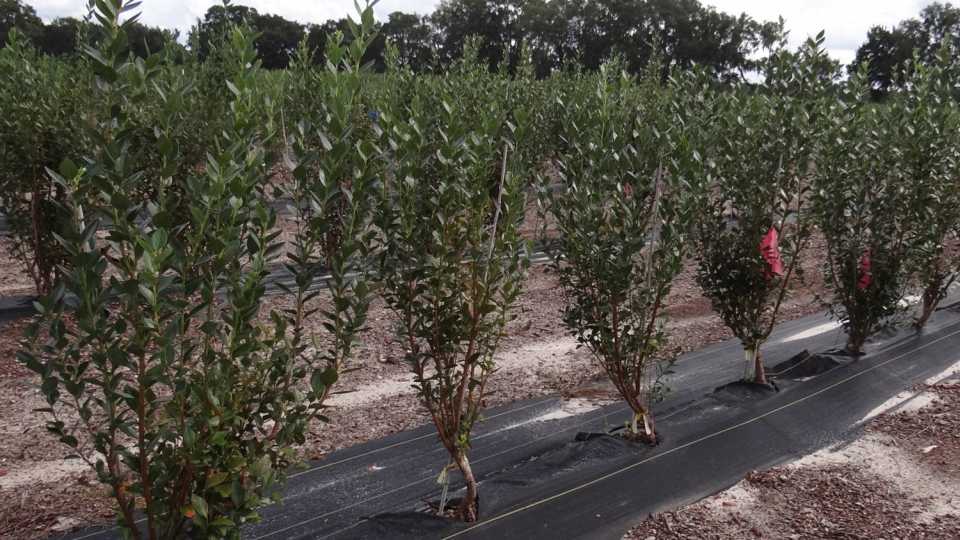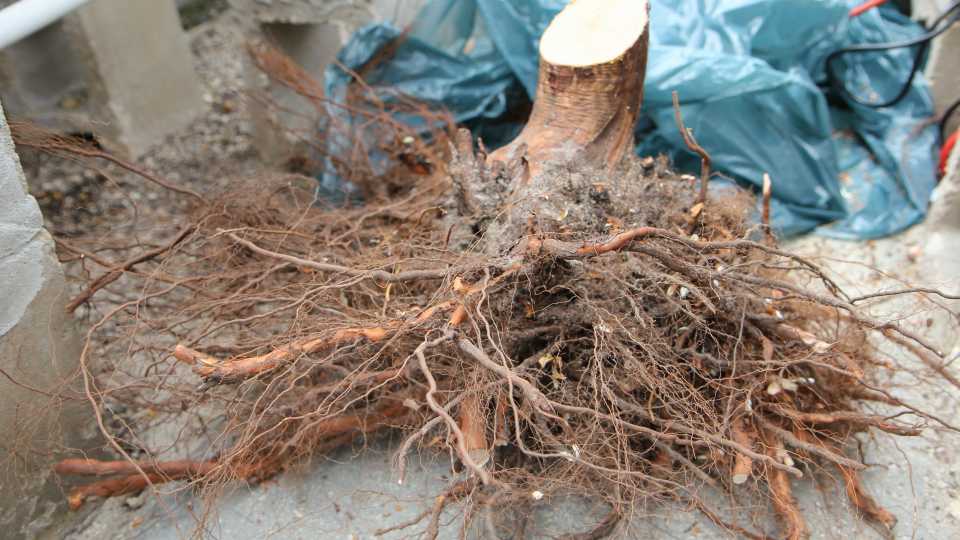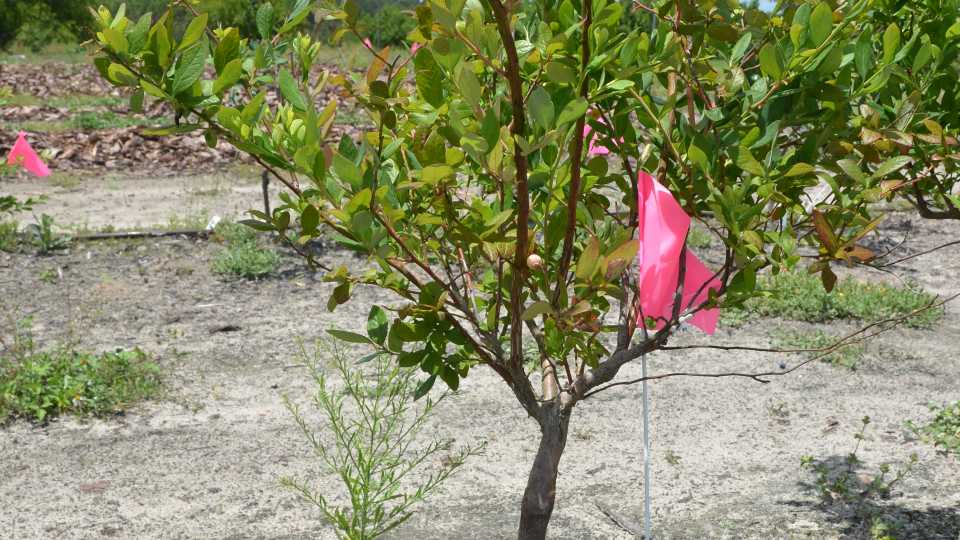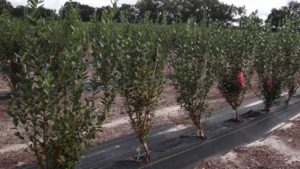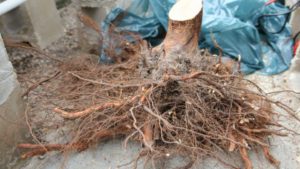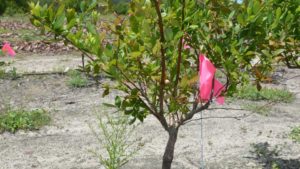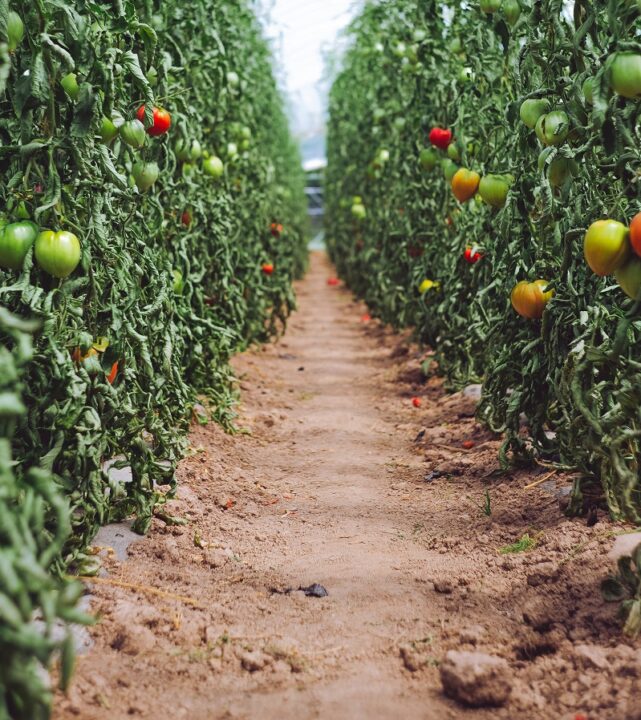Are Grafted Blueberry Plants in Florida’s Future?
Florida produces early-season blueberries for the fresh market during March to early May and was once the only region in North America producing significant quantities of blueberries during this period. Historically, prices were high for Florida blueberries due to the high demand and limited supply. More recently however, increased blueberry production from other regions such as Mexico during the traditional Florida market window has reduced fruit prices for Florida growers.
To make matters worse, production cost\ for early-season southern highbush blueberries in Florida and the lower Southeast U.S. are high. Freeze protection systems are needed, and soils are often not suitable for blueberry production without the addition of large quantities of pine bark. Additionally, Florida blueberries have traditionally been hand-harvested. Hand harvesting is the single greatest cost for Florida growers in established plantings, representing more than 40% of the total.
Because of the high cost of hand-harvesting, there is increased interest in mechanically harvesting blueberries for the fresh market. Some of the newer southern highbush cultivars have fruit and bush characteristics that are better suited for machine harvesting than the older standard cultivars such as ‘Emerald’ or ‘Jewel.’ While machine harvesting substantially reduces harvest costs, there are some yield losses associated with it. Berries dropped on the ground (ground drops) during machine harvesting is one example of lost yield during machine harvesting. Training and pruning plants to a narrow crown at an early age can reduce ground drops, but this requires labor and does not eliminate the problem.
Taking Stock of Sparkleberry
Ongoing research at UF/IFAS is evaluating the use of sparkleberry (Vaccinium arboreum) as a potential rootstock for commercial blueberry production. Sparkleberry is a small native tree with several characteristics that may make it suitable as a potential blueberry rootstock, including: 1) graft compatibility; 2) monopodial or single trunk growth habit; 3) greater tolerance to low soil organic matter and high pH soil than blueberry; and 4) deep, expansive root system with greater drought tolerance than blueberry.
Our research has been underway for approximately eight years. Initially, two plantings with grafted and own-rooted plants were established in North-Central Florida using pine bark amended and non-amended sandy soils. The plant material consisted of ‘Meadowlark’ and ‘Farthing’ plants grafted on sparkleberry seedlings or grown on their own roots. Initially, the grafted plants were smaller and yielded less than the own-rooted plants. However, by year three and subsequently, plant growth and berry yield of grafted plants was greater than own-rooted plants when grown in non-amended soil and yields of grafted plants in non-amended soil were similar to own-rooted plants grown in amended soil. This suggests that using sparkleberry as a rootstock might eliminate, or significantly reduce, the need for soil amendment. There was a tendency for grafted plants to produce slightly larger fruit than own-rooted plants although this difference was not always observed. No consistent differences in internal fruit quality were observed between grafted and own-rooted plants.
Deep Roots
Although plant water status was not measured, the deep expansive root system of grafted plants probably reduces diurnal drought stress, which is known to occur during hot weather, even in irrigated fields. Moreover, eight years after planting, the own-rooted plants had a higher mortality rate in the field than the grafted plants.
The original plantings used sparkleberry seedlings as the source for rootstock plants. The seedling population was variable for important traits that are needed for a suitable rootstock plant. Selections from the original sparkleberry seedling population were made based on their performance in the original trial and were clonally propagated for further study. These selections are currently being tested on several cultivars. Each cultivar/sparkleberry combination is being evaluated independently. The goal is to identify sparkleberry clones that perform well as rootstocks with the commercially important southern highbush blueberry cultivars used in Florida. To date, our results are encouraging but still preliminary.
Unfortunately, there is no shortcut to evaluating these cultivar/rootstock combinations under field conditions for multiple years. There are still challenges to address including identifying the best grafting procedure(s), developing efficient nursery production practices, and understanding how cultural requirements for grafted blueberry plants may differ from traditional own-rooted plants. Continued field testing and economic analysis are needed to clearly define the potential benefits of using sparkleberry as a blueberry rootstock and determine if they offset the additional costs of grafted nursery plants.
AUTHOR NOTE: This research was supported by USDA’s National Institute of Food and Agriculture under award number 2009-51181-06021; The Florida Department of Agriculture and Consumer Services award number 00120479; and Straughn Farms, LLC.




